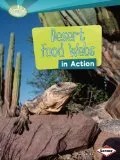Today’s STEM Friday book is not our usual fare. In For the Good of Mankind?: The Shameful History of Human Medical Experimentation, author Vicki Oransky Wittenstein
 has gathered horrific examples of medical experimentation performed on people without their knowledge or consent. Although you might expect the cases to be largely from previous centuries, the sad truth is that Wittenstein has uncovered examples right up to the present day.
has gathered horrific examples of medical experimentation performed on people without their knowledge or consent. Although you might expect the cases to be largely from previous centuries, the sad truth is that Wittenstein has uncovered examples right up to the present day.
Note: If you are squeamish, you should probably stop reading right here.
Wittenstein starts the book with the outrageous story of Simeon Shaw, a four-year-old Australian boy who developed bone cancer in 1946. With a great deal of fanfare and publicity, the boy and his mother were brought to the University of California Hospital in San Francisco for treatment. Unbeknownst to most people involved, including Simeon’s mother, he was injected with radioactive materials instead and his tissues were harvested to study the movement of radioactive materials in the human body. Simeon was sent back home without receiving any actual cancer treatment and died months later.
The author sticks to her thesis about the conflict of medical experimentation and patient’s rights for the rest of the book, digging out case after case of painful, often fatal, medical experiments carried out against the patient’s best interest and mostly without informed consent. Accounts range from the words of a survivor of Dr. Mengele’s concentration camp experiments to the more recent Trovan experiment in Nigeria, where certain participants were given the unproven drug Trovon to cure their meningitis instead of an antibiotic that was known to work.
Some of the case histories felt like they needed a bit more perspective. Why did the doctors in California want to perform experiments with radiation on a small, sick boy? Why couldn’t they have used an animal model? Unless the reader is an ardent student of history who understands the time period, it feels like the historical context, experimenter’s motivations and even the outcomes have not been described fully enough.
For example, Edward Jenner tested the idea behind smallpox vaccine by giving his gardener’s young son cowpox and then purposely exposing him to smallpox without the boy’s knowledge. It seems atrocious to purposely infect a small boy with a potentially fatal disease. What is not mentioned in the book, however, is that others had already conducted successful experiments using cowpox to create immunity against smallpox and Jenner had every reason to believe he would also be successful. It would not be difficult to include numbers as to how many people were dying from smallpox at the time (20% of the population according to one source) and how many lives were saved by the vaccine, but that is not revealed.
Does establishing that there might have been some benefits – or at least compelling reasons for the inhumane experiments – somehow negate or justify the wrongfulness of the procedure? To my mind, it does not. I think, however, that being able to more fully examine the experimenter’s actions based on the information available at the time does help add important historical context that might allow researchers and policy makers to avoid similar patterns of thinking in the future, such as what boundaries regarding personal freedoms and human decency should be safeguarded when a country is at war.
Regarding safeguards, the author shows that we have made significant advancements in the area of medical ethics over time. As modern techniques take our abilities into the realm of science fiction, we need to make sure policies remain in place to protect individuals, and particularly the most vulnerable ones, from the types of cruel treatments in the name of medical advancements the author has uncovered.
Obviously, this is a thought-provoking book. For the Good of Mankind?: The Shameful History of Human Medical Experimentation is likely to leave the reader with many tough questions to ponder. It is probably best for mature young adult readers interested in medical history and ethics.
Discussion guide available at Vicki Oransky Wittenstein’s website
Publisher: Lerner Publishing Group (August 1, 2013)
ISBN-10: 1467706590
ISBN-13: 978-1467706599
To find out more about the book and Vicki Oransky Wittenstein, check the blog tour stops:
Mon, Nov 4
proseandkahn
Tues, Nov 5
The Prosen People
Thurs, Nov 7
The Nonfiction Detectives
Fri, Nov 8
Growing with Science
Mon, Nov 11
Ms. Yingling Reads
Tues, Nov 12
Through the Wardrobe
Wed, Nov 13
Kid Lit Frenzy
Thurs, Nov 14
GreenBeanTeenQueen
Fri, Nov 15
The Fourth Musketeer
Disclosures: This book was provided by the publisher for review purposes. Also, I am an affiliate for Amazon, and if you click through the linked titles or ads and make a purchase, I will receive a small commission at no extra charge to you. Proceeds will be used to maintain this self-hosted blog.
Come visit the STEM Friday blog each week to find more great Science, Technology, Engineering and Math books.









